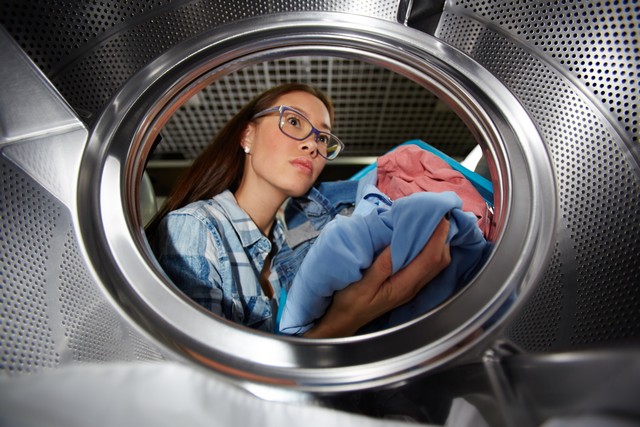
Differences Between Dryer Vent Cleaning and Air Duct Cleaning
If you’re wondering about the differences between dryer vent cleaning and air duct cleaning, you’re not alone. These two processes serve distinct functions in maintaining your home. Dryer vent cleaning focuses on removing lint and debris from the dryer’s exhaust system to prevent fire hazards and improve efficiency. In contrast, air duct cleaning involves clearing dust, allergens, and contaminants from your HVAC system for better air quality and system performance. This blog will break down both types of cleaning to help you understand why each is vital.
Key Takeaways
- Dryer vent cleaning focuses on removing lint to prevent fire hazards, while air duct cleaning aims to improve indoor air quality by eliminating dust and allergens.
- Regular dryer vent cleaning is essential for safety and efficiency, with recommendations to clean once or twice a year, while air ducts should be cleaned every 3 to 5 years.
- Neglecting both cleaning processes can lead to serious safety risks, increased utility costs, and decreased lifespan of HVAC systems and dryers.
Key Differences Between Dryer Vent Cleaning and Air Duct Cleaning
Knowing the core difference between dryer vent cleaning and air duct cleaning is vital for maintaining your home. Dryer vent cleaning specifically targets the exhaust path of your laundry dryer, eliminating heat and moisture from the appliance. On the other hand, air duct cleaning encompasses the entire HVAC system, which circulates conditioned air throughout your home.
Dryer vent cleaning primarily expels hot air and prevents fire hazards from lint buildup. Air duct cleaning, meanwhile, focuses on enhancing indoor air quality by removing dust, allergens, and other contaminants from the ducts. Both processes are essential, but they tackle different problems; dryer vents guard against fire hazards, while air ducts ensure a healthier living environment.
Although both cleaning processes use different techniques, they are critical for maintaining a safe and efficient household. Dryer vent cleaning primarily involves removing lint, while air duct cleaning targets allergens and dust. Recognizing these differences helps in understanding the need for each service.
Importance of Regular Dryer Vent Cleaning
Regular dryer vent cleaning addresses both efficiency and safety concerns. Lint and debris can accumulate in your dryer vent, blocking airflow and leading to overheating. This buildup is a significant fire hazard, making regular cleaning essential to prevent potential disasters.
Efficiency is another critical factor. A clogged dryer vent forces the appliance to work harder, increasing drying times and energy consumption. Regular dryer vent cleaning can enhance the efficiency of your dryer, resulting in quicker drying times and reduced energy costs.
Cleaning dryer vents once or twice a year is recommended to maintain both safety and efficiency. Following this schedule ensures smooth dryer operation and minimizes fire hazards in your home.
Importance of Regular Air Duct Cleaning

For homeowners, improving indoor air quality is a priority, and regular air duct cleaning significantly contributes to this goal. Dirty air ducts can circulate dust, pet dander, and mold spores, leading to respiratory issues and other health problems. Cleaning your air ducts can dramatically improve air quality.
Efficiency is also a key benefit of regular air duct cleaning. Blocked air ducts can reduce the efficiency of your HVAC system, leading to higher utility bills and potential maintenance issues. Keeping your air ducts clean helps your heating and cooling systems run more efficiently, potentially extending their lifespan and reducing energy costs.
Air ducts should generally be cleaned every 3 to 5 years to maintain optimal air quality and system efficiency. This routine maintenance ensures that your HVAC system, ventilation system, and air handler operate at their best, providing you with a comfortable and healthy living environment, including effective air conditioning.
Read more: Improving HVAC System Efficiency With Quality Duct Cleaning
How Dryer Vent Cleaning Works
Dryer vent cleaning starts with a specialized tool that pulls lint and debris from the exterior vent, ensuring thorough removal and preventing lint blockage. This step is vital for clearing the main pathway of obstructions.
Technicians then clean the dryer lint trap and the back of the dryer with an air tool to dislodge remaining debris. Multiple passes with cleaning tools are performed to ensure that the entire duct work is free of obstructions. This thorough approach ensures a comprehensive cleaning.
Finally, the dryer is tested on an air-only cycle to confirm that airflow is restored and functioning properly. This step confirms that the cleaning is effective, ensuring your dryer operates efficiently, reducing fire risks, and improving performance.
How Air Duct Cleaning Works
Air duct cleaning starts with a thorough inspection to identify any issues or areas needing special attention. This initial step helps technicians plan an effective cleaning strategy tailored to your HVAC system.
Negative pressure cleaning is a commonly used technique that involves:
- Employing a high powered vacuum system to create continuous suction throughout the ductwork.
- Using agitation tools like rotating brushes to dislodge dirt and contaminants from the duct walls, ensuring a deep clean.
- Cleaning essential components such as the blower motor and evaporator coil to maintain the overall efficiency of the forced air hvac system.
A final inspection follows the cleaning process to confirm thorough duct cleaning. This ensures the air ducts are free of contaminants, improving indoor air quality and system performance, including the duct system, and that the ducts cleaned are effective.
Read more: How Often Should Air Ducts Be Cleaned?
Benefits of Dryer Vent Cleaning
A major benefit of dryer vent cleaning is the prevention of fire hazards. Removing combustible lint reduces the risk of a fire starting in your home. This measure is vital for protecting your family and property.
It also offers energy savings. A clean system allows your dryer to run more efficiently. This can reduce energy use by up to 30 percent. This efficiency lowers utility bills and ensures faster drying times.
Maintaining clean dryer vents also extends the lifespan of your appliance. Reducing mechanical issues and minimizing wear and tear leads to a longer-lasting, more reliable dryer.
Benefits of Air Duct Cleaning
Air duct cleaning significantly reduces allergens and irritants in your home. Removing dust particles, mold, and other contaminants greatly improves air quality, making it easier to breathe and reducing respiratory risks.
Another key advantage is improved HVAC system efficiency. Clean air ducts allow:
- Better airflow
- More efficient operation of heating and cooling systems
- Lower energy costs
- Extended equipment lifespan
Regular air duct cleaning also eliminates unpleasant odors. To remove dust, removing trapped debris and mold from your ducts helps ensure your home smells fresh and clean.
Potential Risks of Neglecting Dryer Vent and Air Duct Cleaning

Neglecting dryer vent cleaning can lead to severe consequences, including an increased risk of fire hazards from flammable lint buildup that can catch fire. Lint accumulation is a leading cause of dryer-related fires, making regular maintenance essential.
Similarly, not cleaning air ducts can result in:
- Poor indoor air quality and health problems
- Circulation of dust, allergens, and contaminants, exacerbating respiratory and other health issues
- Increased HVAC strain, leading to higher utility bills and faster equipment wear, especially if you have dirty ducts.
Regular maintenance of dryer vents and air ducts and ducts and vents is crucial to avoid these risks and ensure a safe, efficient home environment.
Choosing Professional Cleaning Services
When selecting professional cleaning services, check for certifications from recognized bodies like NADCA and HVAC governing organizations. These certifications ensure adherence to industry standards and best practices.
The company should have rigorous employee screening processes, including background checks and drug testing, to ensure technician reliability and trustworthiness. Additionally, verify that the company has liability insurance to protect against potential damages during service.
Request a clear cost breakdown to avoid unexpected charges and choose a service that offers comprehensive cleaning for the entire system of the HVAC system, not just the ducts, as part of the whole house process. A reputable and thorough service ensures your heating and cooling system remains safe and efficient.
Read more: Reasons to Hire a Professional Mold Remediation Service
Final Thoughts
Understanding the distinctions between dryer vent cleaning and air duct cleaning is key to maintaining a safe and efficient home. Both services play vital roles in protecting your household, with dryer vent cleaning safeguarding against fire hazards and air duct cleaning improving indoor air quality. Regular maintenance of these systems not only ensures safety but also enhances appliance efficiency and overall comfort in your living environment.
For professional assistance, Mold-B-Gone is your trusted partner. We specialize in offering thorough cleaning services tailored to your needs, including duct cleaning in Atlanta. Our team is dedicated to delivering top-quality solutions to improve your home’s safety, efficiency, and air quality. In addition to duct cleaning, we also offer crawlspace encapsulation, mold remediation, water damage restoration, and more. Reach out and let our mold removal experts in Atlanta help you create a healthier and safer living space.
We also proudly serve Alpharetta, Cumming, Duluth, Ellijay, and surrounding areas, offering comprehensive mold remediation services wherever you need them.
Frequently Asked Questions
How often should dryer vents be cleaned?
To maintain safety and efficiency, dryer vents should be cleaned at least once or twice a year. Regular cleaning prevents fire hazards and improves your dryer’s performance.
What are the signs that my air ducts need cleaning?
If you notice visible mold growth, pest infestations, or significant dust buildup in your ducts, it’s time for a cleaning. Addressing these issues promptly can improve your indoor air quality.
Can dirty air ducts affect my health?
Dirty air ducts can indeed impact your health by circulating allergens and contaminants, which may lead to respiratory issues and other health concerns. It is essential to maintain clean air ducts to promote a healthier environment.
What certifications should I look for in a professional cleaning service?
Select a professional cleaning service that holds certifications from reputable organizations, such as NADCA and HVAC governing bodies, to ensure quality and compliance with industry standards.
What are the benefits of regular dryer vent cleaning?
Regular dryer vent cleaning significantly reduces fire hazards, improves energy efficiency, and prolongs the lifespan of your appliance. Ensuring a clean vent system is crucial for both safety and cost-effectiveness.




